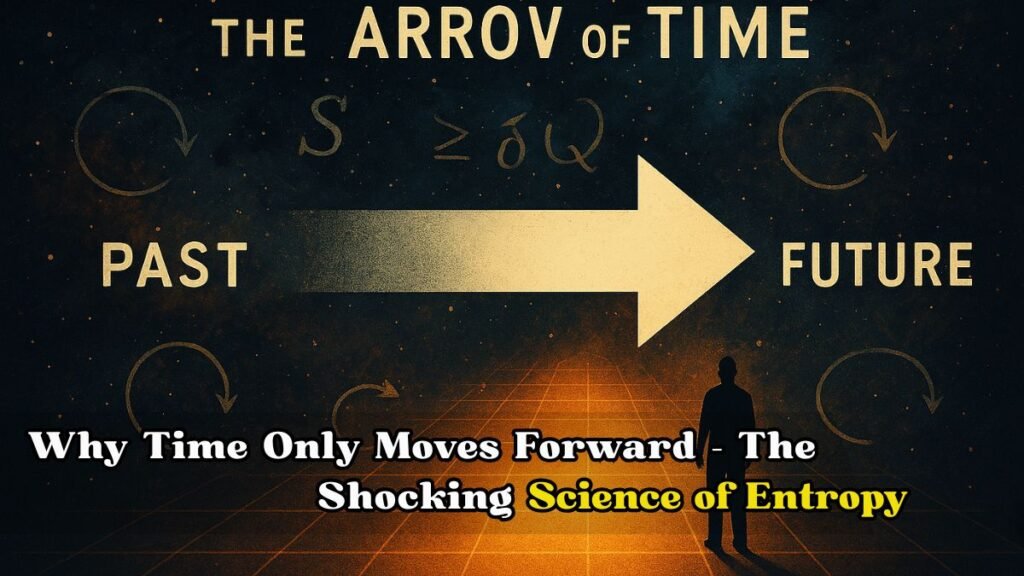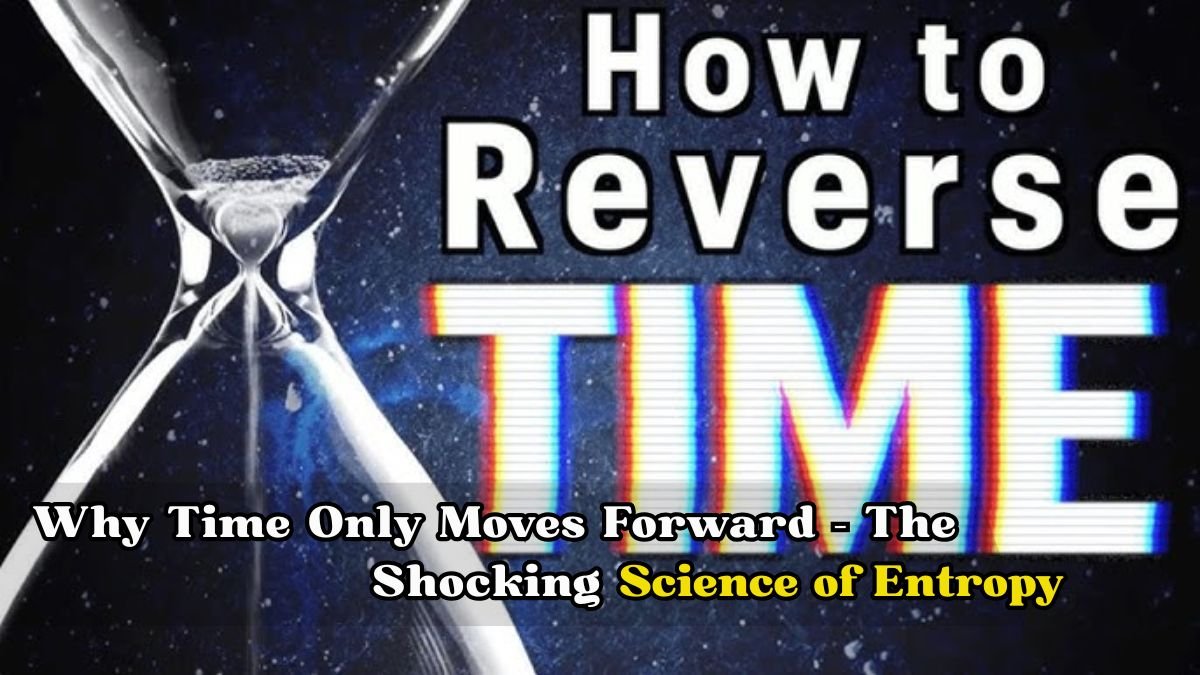Everyday Puzzles of Time’s Arrow:
Science of Entropy: We often notice peculiar facts about our everyday lives, such as seeing our age rise steadily without any sign of reversal and watching broken glass remain shattered rather than magically reassembling itself. Similarly, while we can vividly recall mistakes we made yesterday, we have no memory of events that have not yet occurred. These seemingly mundane observations hint at a deeper principle: time intrinsically flows in one direction, guiding all processes toward greater disorder.
Entropy: Nature’s Measure of Disorder:
Entropy is a concept that quantifies the number of microscopic ways a system’s internal components can be arranged while appearing identical on a larger scale. A low-entropy state, like a newly made bed or a pristine wine glass, corresponds to relatively few configurations. In contrast, a high-entropy state, such as rumpled sheets or shattered glass, can occur in countless arrangements. Thus, entropy offers a precise way to understand why disorder tends to increase over time.
Macroscopic vs. Microscopic Perspectives:
At the macroscopic level, we perceive objects and processes directly: a melting ice cube, a spinning ceiling fan, or a flowing river. Yet at the microscopic level, these phenomena emerge from the unpredictable motions and interactions of vast numbers of particles—molecules, atoms, and subatomic constituents. Entropy serves as a bridge between these scales by capturing how particle-level randomness collectively creates the irreversible behavior we witness in everyday life.
Children’s Playroom Analogy:
Imagine a child’s bedroom with every toy meticulously placed on shelves and in toy boxes: this perfectly organized scene represents a single, highly ordered arrangement. By contrast, if the toys are scattered all over—on the floor, under the bed, and draped across chairs—there are virtually infinite ways for them to be strewn about. When left unattended, the room inevitably gravitates toward a disordered state because the sheer number of possible messy arrangements overwhelmingly dominates the lone tidy configuration.
Sugar in Milk Analogy:
Pouring sugar into a cup of milk or coffee provides another intuitive glimpse of entropy. Initially, granules of sugar sit separately, but once stirred, they dissolve and disperse uniformly throughout the liquid. You never observe the sugar spontaneously clustering back into crystals because there are astronomically more ways for the sugar molecules to be mixed than to occupy their original, separate positions. This irreversible mixing exemplifies nature’s strong preference for high-entropy outcomes.

Second Law of Thermodynamics:
In the mid-19th century, Rudolf Clausius formalized an empirical observation: heat energy flows naturally from hotter objects to cooler ones, never the reverse. This principle, known as the Second Law of Thermodynamics, captures the same unidirectional “arrow of time” seen in aging, mixing, and decay. Whether designing steam engines or studying planetary atmospheres, engineers and scientists rely on this law to predict that warm regions will cool while cold regions will never spontaneously heat without external work.
READ MORE
IPL 2025: Rain in Hyderabad Ends SRH Playoff Hopes, DC Still Winless After Clash
Glenn Maxwell Out, Mitchell Owen In: PBKS Signs Him Post-PSL
IPL 2025: DC vs SRH Match Summary with Full Scorecard
Boltzmann’s Statistical Explanation:
Ludwig Boltzmann provided a profound insight by connecting thermodynamics to probability. He argued that the Second Law arises because there are vastly more disordered microstates (high entropy) than ordered ones (low entropy). For instance, a deck of 52 cards has 8×10^67 possible orderings, but only one fully sorted sequence. As a result, random shuffles rarely recreate the sorted deck. Similarly, the natural motion and collisions of molecules overwhelmingly drive systems toward disordered arrangements.
Dominoes Demonstration:
A simple row of standing dominoes offers a tactile demonstration: a gentle nudge sends them all crashing down effortlessly. To restore them upright, we must invest careful, step-by-step effort, placing each domino in its precise spot. This asymmetry reflects a fundamental truth: the transition from order to disorder requires less energy and is far more probable than rebuilding order from chaos.
Everyday Entropy in Action:
Entropy manifests in countless daily scenarios: ice cubes melting into water, perfume diffusing through a room, or a hot cup of coffee cooling down as heat dissipates into the air. Even digital devices obey this rule—data storage generates waste heat, and every computing cycle spreads energy into random molecular vibrations. Recognizing these processes as entropy-driven helps engineers improve device efficiency by minimizing unnecessary disorder.
Maxwell’s Demon and Information Limits:
In 1867, James Clerk Maxwell imagined a clever “demon” that could sort fast and slow-moving molecules to decrease entropy without expending energy. However, later studies in information theory revealed a catch: acquiring, storing, and erasing the information required for such sorting would itself increase entropy, preserving the Second Law. This thought experiment highlights that even with idealized intelligence, nature’s march toward disorder remains unhalted.







